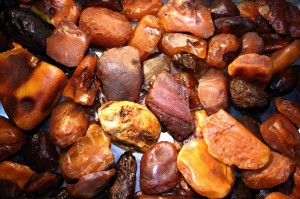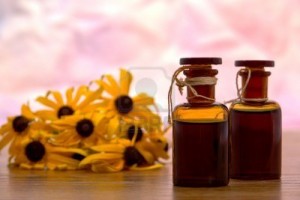 Besides accepting it as a semi-precious gem and a wonderful accessory to wear amber as jewelry, we should also accept amber as a traditional remedy.
Besides accepting it as a semi-precious gem and a wonderful accessory to wear amber as jewelry, we should also accept amber as a traditional remedy.
People have been using amber in aroma therapies and rituals to cure diseases and epidemics since ancient times. It is not only a gem, but also a healing stone used to calm certain areas of the human body where pain is present. The easiest way to use amber as a traditional remedy is to wear it in direct contact with the skin. People used to place it in the area of the stomach, the spleen, the liver, the kidneys or any other internal organ where they felt pain or discomfort. It was also used for nervous disorders and for kidney stones; the best example in history is Duke Albrecht giving Martin Luther white amber as remedy for the pain from his kidney stone.
People who wore amber as jewelry had a more "sunny nature", strength, flexibility and creativity, helping to preserve positive traditional values. Ancient aromatherapy also used amber as a traditional remedy. The petrified resin pieces were burnt down and the smoke had proven purifying effects on people. It helped psychologically when sufferers of stomach complaints or heart anxiety inhaled its smoke. It was also beneficial for paralysis, gout and rheumatism.
 Plinius the Older (deceased 79 AD) used to recommend amber as a traditional remedy for all kinds of ailments such as eye disease, throat pains, fever and even mental disorders. Sick people would simply have to wear an amber necklace to fight back against pains and complaints.
Plinius the Older (deceased 79 AD) used to recommend amber as a traditional remedy for all kinds of ailments such as eye disease, throat pains, fever and even mental disorders. Sick people would simply have to wear an amber necklace to fight back against pains and complaints.
Hildegard von Bingen (1098-1178) recommended the ingestion of amber where there was stomach or intestinal pain, problems with urination or even against the "Black Death". He believed that mixing it with wine would be the ideal, universal remedy. Later on in the history of humanity, amber powder became popular in treating war wounds, bandages and healing salves.
Georgius Agricola (1494-1555) was a famous doctor, alchemist and pharmacist in Joachimsthal and Chemnitz. He discovered while performing different experiments on amber that extracting amber acid in distillation is of great importance in color production. Centuries later his discoveries were used in the VERY PRODUCTION OF COLORS. Also, as a pharmacist and doctor, he believed in amber as a traditional remedy and argued that it "possesses the ability to spread, [...] therefore stops the bleeding everywhere it appears". He also believed that amber could inhibit vomiting, diarrhea, ulcers and catarrh of the head, offering significant help against tonsillitis and sore throats. Amber was also good for the heart and heart palpitations, while white amber chased away epilepsy.
 During the 17th and the 18th centuries, doctors recommended the use of amber remedies for rheumatic and heart diseases, skin tone and convulsions, neuropathic disorders, ailments of the lungs, kidneys and other internal organs, and for curing ulcers. Another recommendation of amber as a traditional remedy was the use of it against common coughs or stiff-neck pains. A mixture of rose oil and honey amber would heal all types of ear complaints and would also strengthen the stomach from old moisture. The mixture would also benefit the heart, take away jaundice, soothe pain and stop blood in the urine.
During the 17th and the 18th centuries, doctors recommended the use of amber remedies for rheumatic and heart diseases, skin tone and convulsions, neuropathic disorders, ailments of the lungs, kidneys and other internal organs, and for curing ulcers. Another recommendation of amber as a traditional remedy was the use of it against common coughs or stiff-neck pains. A mixture of rose oil and honey amber would heal all types of ear complaints and would also strengthen the stomach from old moisture. The mixture would also benefit the heart, take away jaundice, soothe pain and stop blood in the urine.



